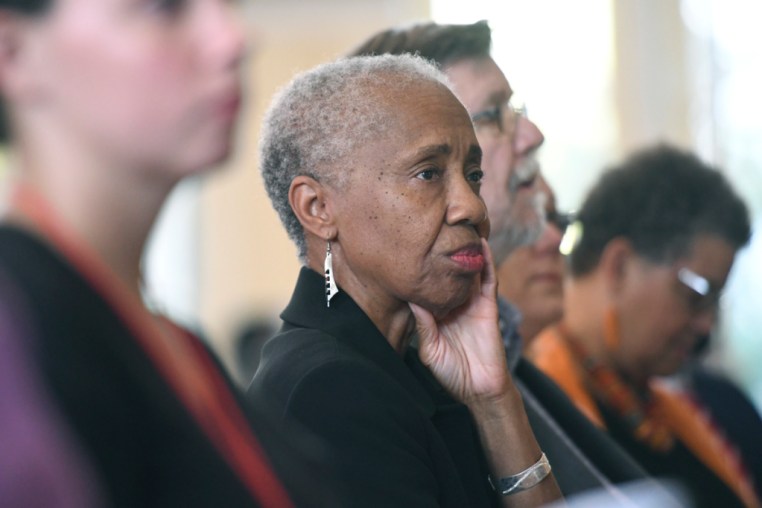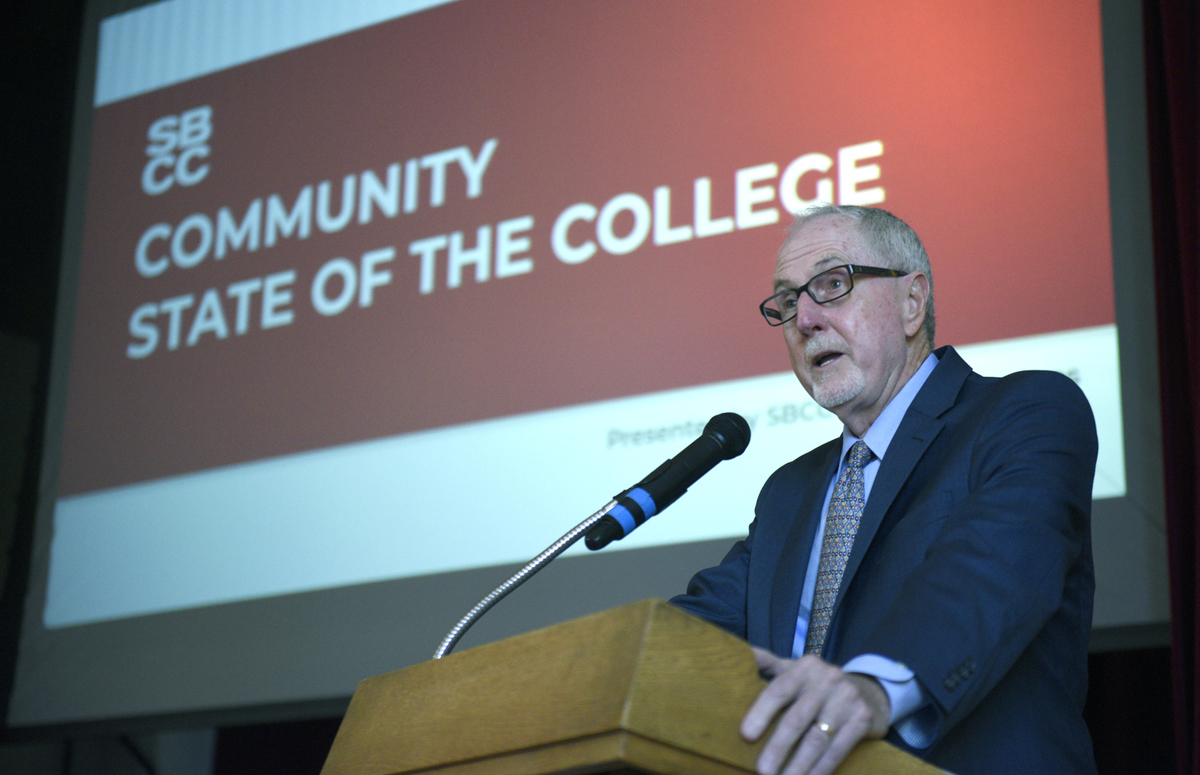The State giveth, and the State taketh away.
Last year, the California Community College Chancellor’s Office promised Santa Barbara City College about $7 million more revenue than the year before — only to realize later that it didn’t actually have the funds to follow through, and it had to take some of the money back.
In the midst of a new student-centered funding formula, a steady decline in enrollment, and a $3.2 million deficit caused in part by the state’s funding take-back, the Board of Trustees gave a presentation at its State of the College forum Thursday to explain the ins and outs of the budget crisis. The exact amount of revenue the college will receive for the current 2019-2020 fiscal year is still unclear, further complicating matters.
“Because [the Chancellor’s Office] took a lot of heat for promising more than they could deliver, they decided they won’t tell us until February 2020 what our revenue will be for this fiscal year, which already started July 1,” Trustee Marsha Croninger said. “That’s a budget challenge right there.”
The state implemented the new student-centered funding formula last year in an effort to reward colleges for improving student access and success. Unlike the old formula, which funded the college solely on its number of full-time equivalent students, the new one also takes into account the number of low-income students and measures of student academic success.
“This has been a huge shift we’ve had to adjust to,” Trustee Kate Parker said. “The good news is we’ve been making gains in student success.” In certain respects, Parker is correct. The number of associate degrees given last spring was 2,040 — up from the 1,719 degrees earned in spring 2018.
The formula bases 70 percent of money allocation on the amount of full-time-equivalent students, or students enrolled in 12 or more units. The overall count of low-income students comprises 20 percent of the funds, and the remaining 10 percent is based on student success.
Graduation and transfer rates, retention rate from fall to spring semesters, and the ability to make a living wage after graduation are among the measures of success the state bases its formula on. It allocated the 30 percent change in hopes of leveling the discrepancy in the graduation and transfer rates between white students and students of color.
Enrollment on the main campus has dropped 26 percent since 2009. The decline is consistent with national trends; there is an inverse relationship between community college enrollment and the availability of jobs. The number of college employees, however, has stayed consistent despite the decline in students.
“The portion of budget that pays for employees has risen from 85 percent to 90 percent because the number of employees has not comparably declined,” Croninger said. “Employees are our greatest resources for student success … but we’ll have to match our employee workforce to the size of our enrollment while still continuing to aim for student success.”

To deal with the unbalanced employee-to-student ratio, the college has placed a hiring freeze on all new employees in addition to cutting $700,000 from the hourly employee fund. The college has a $24.7 million unrestricted general fund reserve to fall back on in times of recession, $2.9 million of which is undesignated and can be used to balance the budget.
Executive Vice President Pamela Ralston pointed out that out-of-state and international students pay higher tuition and thus bring more revenue, particularly international students who are also required to take a full-time class load. Enrollment in both out-of-district student groups has declined, Ralston said, prompting questions from the audience.
“It appears that there has been less marketing outside of the district and internationally. I’m wondering why the board has been so slow to market in response to the drop in enrollment,” one community member asked. “Why are you guys continuing to discourage out-of-district marketing, and why was the increase in international marketing so late into the decline?”
It appeared the board was as confused as the questioner. Board President Robert Miller said he was unaware of any decrease in out-of-district marketing, but Trustee Jonathan Abboud recalled that at their board retreat in June, “We did lower our marketing a bit.” Croninger jumped in and said it’s illegal to market in a different California district without permission from that district, but a woman in the audience shot back that it is legal as long as SBCC is offering a program that the other district isn’t.
The trustees said they will continue to work with the superintendent-president to chip away at the deficit as the year goes on, and also pointed to the silver linings. Abboud highlighted the success of SBCC’s Promise Program, which provides local high school students with the opportunity to attend SBCC for two years, completely free of charge.
The program, funded by the SBCC Foundation, helps bolster the full-time equivalent student count and increase state funding because it requires participants to enroll in a full-time class load. More than 3,000 students have already benefited from the program since its inception in 2016, about 1,500 a year.
“Our foundation took the vision of free college and applied it to a privately funded model to provide a comprehensive program,” Abboud said.
The Board of Trustees will convene on main campus for its regular board meeting next Thursday, October 10.




You must be logged in to post a comment.